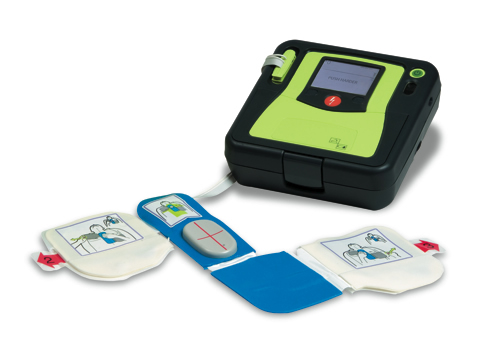Firm Management
What to Do if a Client Has a Heart Attack in Your Office
It’s no coincidence that the number of deaths from cardiac failure occur during tax season. This is, after all, the time of year when the several of the most critical factors for a heart attack are present – elevated stress levels, cold temperatures, over
Sep. 21, 2014

It’s no coincidence that the number of deaths from cardiac failure occur during tax season. This is, after all, the time of year when the several of the most critical factors for a heart attack are present – elevated stress levels, cold temperatures, over-exertion, poor diet, and a lack of physical exercise. Which is an almost perfect description of the tax professional from January to May each year.
We do not actually know how many clients keel over dead in their accountants’ offices, but we do know that this number rises about 5 percent during tax season. The US Department of Labor’s Occupational Safety and Health Administration says that more than 900 coronary deaths occur outside of hospitals and emergency rooms every single day. The Bureau of Labor Statistics notes that more than 3 percent of professional, management and administrative people die at work each year.
So one fine day when you step over to the printer to retrieve the client’s paper copy of a return, the client will quietly clutch his or her chest, fall out of the chair and begin to die.
It is not a matter of whether your client will suddenly keel over and die at your desk, but rather a matter of when. Regardless, the clock is now running. Without defibrillation or other interventions, the client will be dead and non-revivable in 10 minutes or less.
Want to give the client a better chance of survival and expand the services you offer during tax return preparation to include representation before the angels? Here are the first five things to do:
- Call 9-1-1. Do not attempt to drive the client to an emergency room or hospital. Instead, focus on the client’s immediate needs. If possible, give the phone to someone else to talk to the emergency dispatcher while you go on to the next step.
- Give the client an aspirin, preferably uncoated, and have them slowly chew it. The aspirin will enter the bloodstream more quickly if chewed, helping to break up a blood clot. This may be a problem in some offices – employees tend to use the aspirin in the office first-aid kit for headaches and other minor ailments, so that none are available when truly needed. If the client happens to have nitroglycerine tablets or spray handy, you may give them this instead of the aspirin. Most heart attack victims have had no previous history of cardiac problems, or have carried their pills far past the one-year limit for effectiveness. And whatever you do, do not give the client someone else’s pills – that could be fatal.
- Locate the office AED, if you have one. An Automated External Defibrillator (AED) is used to shock the heart back into rhythm if it has stopped, and every office is require by Federal law to have one. Also required are the instructions, training materials and any other materials necessary to operate the unit. The office units cost about $1,250, and can be purchased both online and through safety equipment suppliers. Firm staff can get training on the devices through their local Red Cross chapter. Note: The Federal Cardiac Arrest Survival Act and state laws (in all 50 states) limit liability to persons trying to aid a victim by using an AED.
- Keep it calm and comforting. Excitement is the enemy now, pumping adrenaline into the client’s bloodstream and causing further damage to the heart. Talk to the client in a reassuring voice, loosen any tight clothing and ask the office staff to either be quiet or be gone. Have the client sit up with back supported and covered by a blanket or jacket to help protect against shock.
- If the client collapses or stops breathing, begin CPR. The old way of doing CPR has changed to eliminate mouth-to-mouth breathing. Instead, overlap hands and place on the center of the client’s chest, then press down sharply about 2 inches. Do 30 of these, stop for 10 seconds, then do 30 more. The 10-second breaks are a good way to trade out the people performing the compressions so no one falters due to fatigue.
These are just the immediate, emergency steps to be taken in a crisis. Long before this, the firm should have invested in emergency first aid and CPR training for the staff (available through the American Red Cross at a nominal fee.
In addition, OSHA maintains an excellent resource page at https://www.osha.gov/SLTC/aed/ that covers technology, regulations and other critical information.
Finally, remember that it may not be the client who falls to the floor in coronary arrest – it could be you!
